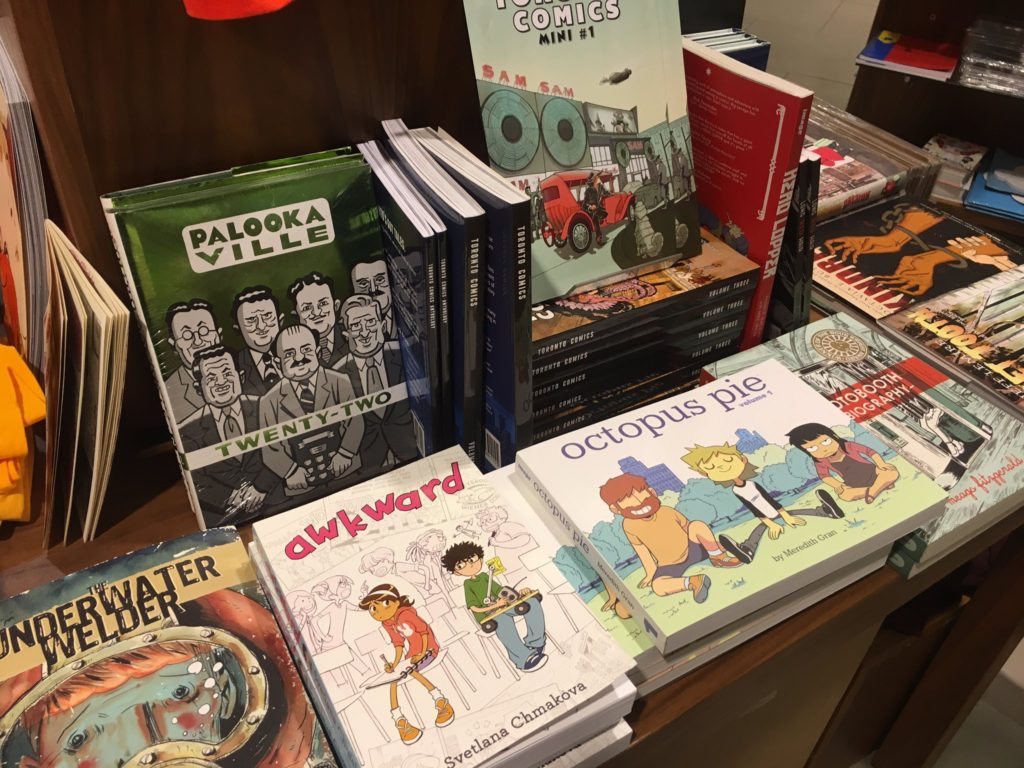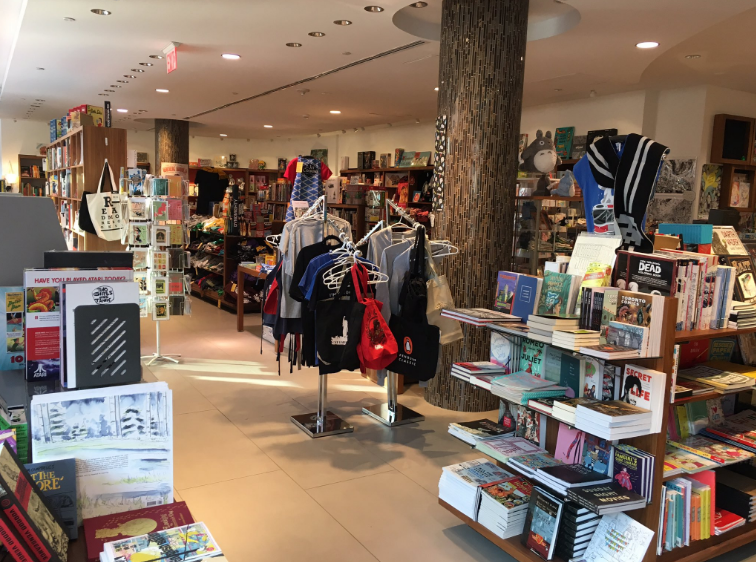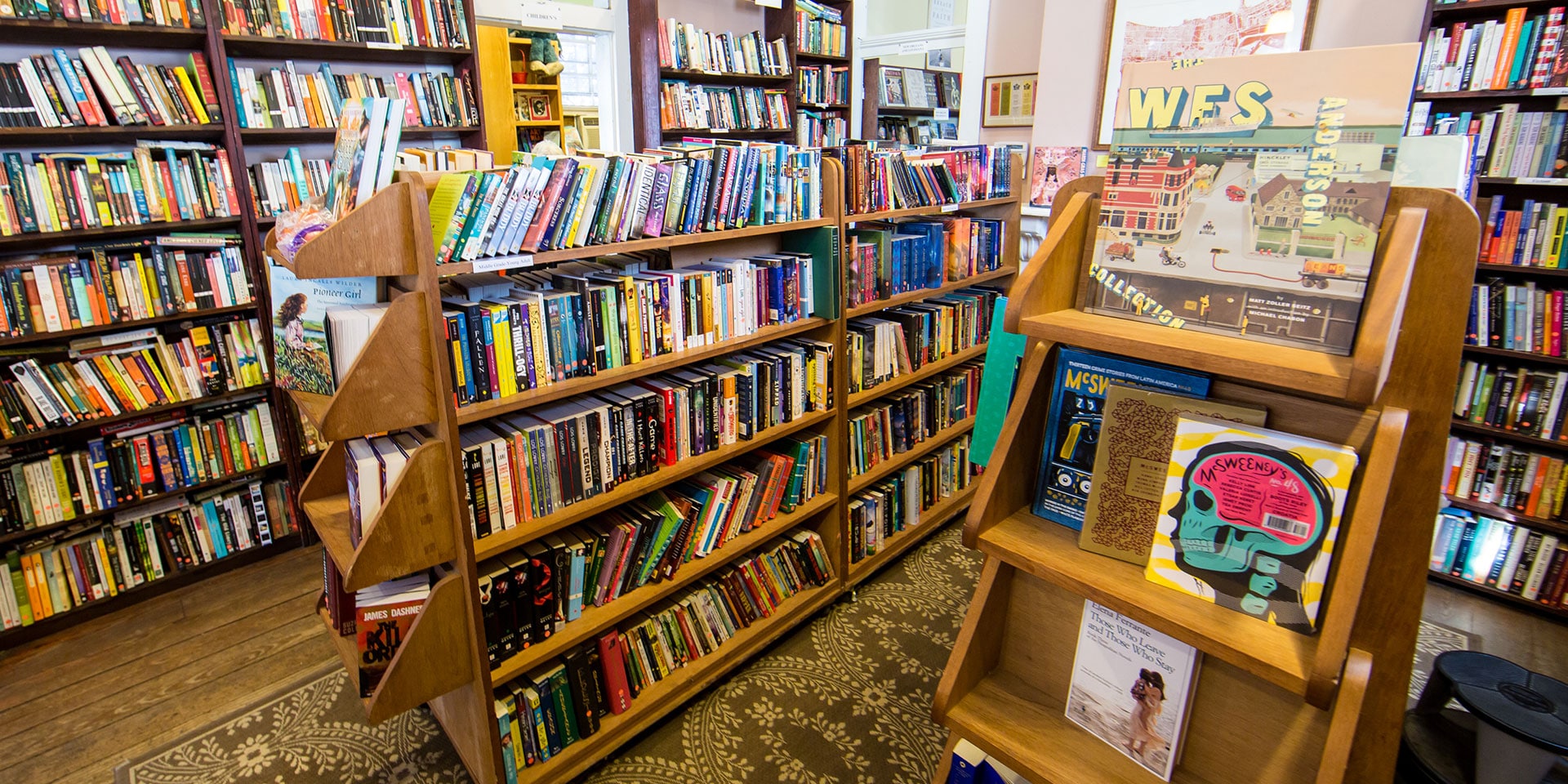So you’ve just finished putting together your first graphic novel. First of all, awesome. Congratulations. You should treat yourself to a nice dinner, and maybe take the rest of the weekend off.
Because come Monday, the next leg of your journey begins: actually getting your book into as many hands as possible. Obviously conventions are a great way to get your book to a wider audience, but you can only be in so many places at once. Fortunately, there are many book and comic stores that can help your book find the exposure it deserves.
If you’re just starting out with self-publishing, you don’t need to worry about Diamond Distribution just yet. A good place to start is to build relationships with local comic shops. It’s best to talk to them in person – bring copies of your books to each store, and present them to shop managers. If you can’t get to a shop, you can send PDFs, but going in person helps establish a personal connection, and helps showcase the print quality of the physical product.

A lot of new creators get worried that a store will frown on a stranger trying to sell them a book, but most comic shops are enthusiastic about new creators! If they didn’t love comics, they wouldn’t be in the industry. Even if they reject you, keep trying. Many stores will only take 1-5 copies on your first round, but as you build a relationship ( and sales! ) they’ll increase the quantity.
Most stores will be happy to accept the book on consignment. Consignment means you give them copies for free to put on their shelves, and if it sells, they’ll give you a cut. Usually you’ll get about 40% of the cover price, but every store has different rates. If it doesn’t sell after a period of time (usually a few months) they’ll ask you to come collect the books.
The difficulty with consignment is that stores deal with a lot of suppliers, and they’re always busy. It’s on you to ask them whether the book has sold or not. Always, and we mean always, get the consignment agreement in writing. This protects you and the store in the long run, so make sure you have a document about the deal you can both refer to down the line.
If a store is willing to buy the book outright from you, great! Generally you’ll want the book to retail for about 2.5 times your production cost. Again, you’ll probably get around 40% of a book’s sale. Not many stores will outright buy a book until they have an established relationship with you, and know that the book sells.

When you’re designing the physical book, remember to include the Manufacturer’s Suggested Retail Price (MSRP) price and content rating (all-ages, teen+, etc.) on the back of the book beside your ISBN. If you don’t have an ISBN, most stores can’t add you to their point-of-sale system, which is an automatic dealbreaker.
If you have a local following, you can always offer to do a signing with a shop. Stores loves signings, as they’re a no-cost way of bringing customers to their door. They’ll give you a table and a date, but it’s up to you to market the event and bring the audience.
Some stores do direct-sales signings, where you get all the money, while others will do commission-based sales, and take a cut for letting you use their space. Find out which in advance!
We’ve recently started dipping our toes in selling through a large Canadian retailer. We’ve learned that they look for a proven ability to sell books–if you can’t sell $5k in books annually, they won’t be interested. That means you need 1) a variety of offerings, and 2) lots of copies of those books! You’ll need both to form a long-term relationship.
If you’re looking for wider distribution for a single comic, you could try contacting small press publishers. A deal with a retailer functions the same way as a deal with a comic shop, but this time you’ll receive 50% of cover price and will likely pay for shipping to their stores or distribution center. You’ll also have to accept any refunds or returns, no matter what state the book is in! Their warehouse will have very specific requirements for shipping and packaging, so be prepared to meet them exactly.
Creating a graphic novel is a long and rewarding process, but it’s only half the battle. Like a tree falling in a forest with no one around to hear it, even the most well-crafted story won’t make much of an impact if there’s no one reading it. It’s up to you to get your book seen, but as this article hopefully shows, you don’t have to do it alone.
So open a phone book (or, if you live in the present, a web browser will do), find a list of local comic and book stores, and get hustling!
I welcome feedback and suggestions at @cardboardshark!
- How does an anthology choose its stories? - January 22, 2019
- Marketing for Indie Creators and Kickstarters - January 8, 2019
- What’s in an anthology contract? - December 28, 2018

Been in independent comic creation for years, and a bookseller at a comic shop — what follows headlines like this usually drives me crazy, but this is solid advice. Only thing I’d say is the ISBN (for books) and UPC (for issues) is probably not a deal-breaker for most shops dealing with self-published comics, but if you don’t print a price, we’re going to slap an ugly orange price sticker on it in front of you.